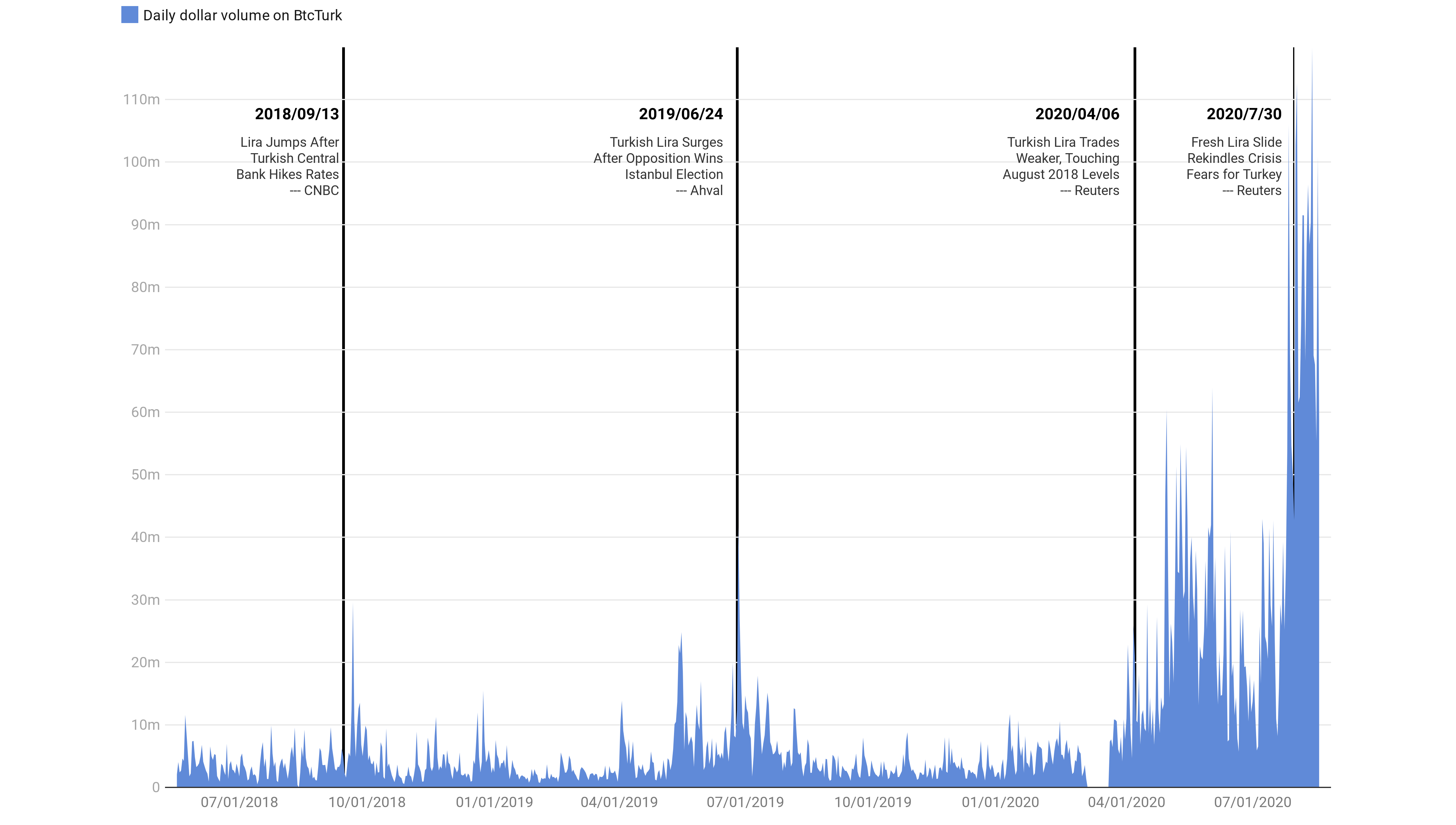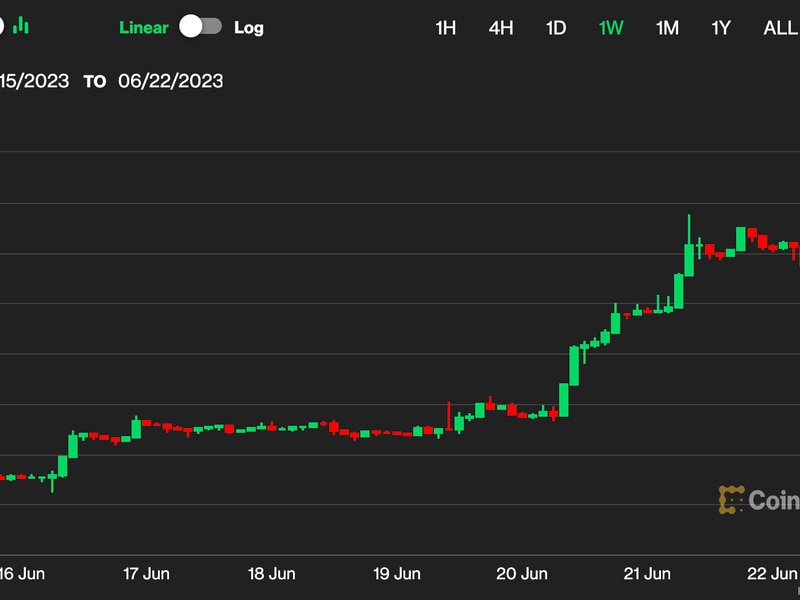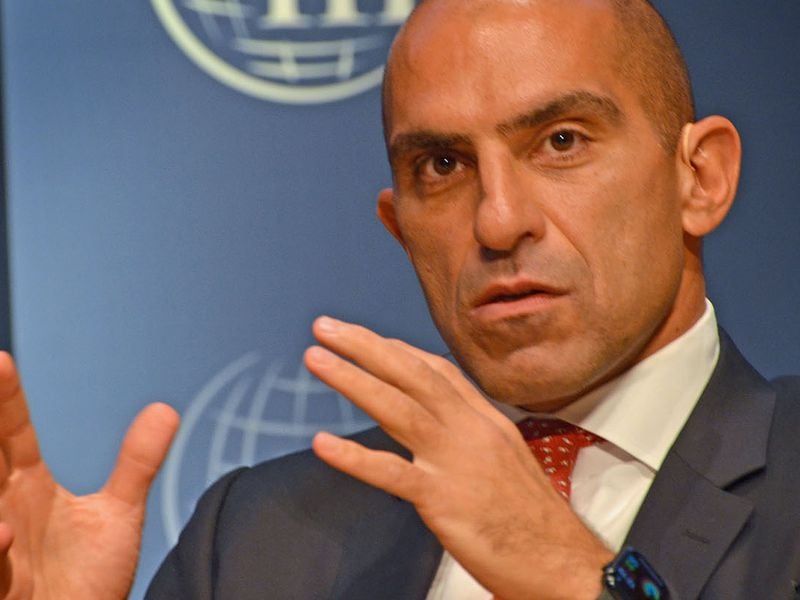The Protocol: Ethereum Struggles With Sprawl as Optimism Airdrops $27M
Last week marked the one-year anniversary of Ethereum’s historic “Merge” – the shift to a more energy-efficient proof-of-stake network. But in some ways the largest smart-contract blockchain has become a victim of its own success: Staking is so popular that the number of network validators is mushrooming toward 1 million, introducing new concerns related to the sprawl. We discuss how Ethereum developers are addressing the issue with the EIP-7514 proposal.
Also in this week’s issue:
-
Exclusive interview with DYdX founder Antonio Juliano as the decentralized exchange launches its own layer-1 blockchain with Cosmos technology.
-
Optimism’s $27 million airdrop.
-
Are we all gonna make it? The infamous Avalanche developer Daniele Sestagalli is back with new project called WAGMI.
You’re reading The Protocol, CoinDesk’s weekly newsletter that explores the tech behind crypto, one block at a time. Subscribe here to get it every week.
Network news
:format(jpg)/cloudfront-us-east-1.images.arcpublishing.com/coindesk/4NK3BM2I35CYBCVW7XSQVOASCM.png)
Chart from Galaxy Research shows how the projected growth of Ethereum validators would slow based on the EIP-7514 proposal.
CROWD CONTROL: Ethereum has been so successful in attracting new validators for its proof-of-stake blockchain that the network is now starting to suffer from sprawl. There are nearly 800,000 active validators on the network, up about 41% since April’s “Shapella” upgrade, when withdrawals of staked ETH were first allowed, according to a Sept. 14 report by Galaxy Research’s Christine Kim. Based on certain assumptions, the number is on track to hit 1 million by mid-November and 2 million by June 2024. “Ethereum is getting close to reaching an unsustainable number of active validators,” Kim wrote. It’s pretty technical, but network “latency” is becoming a key problem, according to the report: There’s been “an increasing frequency of block reorgs and missed blocks in the first two slots of an epoch, likely due to increasing latency in attestation aggregation.” Developers have formalized EIP-7514 – an improvement proposal that would help, at least in the short term, by limiting entries of new validators to 8 per epoch (roughly 12 seconds), down from the current rate of 12. Another major concern from the rapid proliferation of validators, according to the Ethereum Foundation’s Dankrad Feist in a recent post, is that staking is becoming too concentrated in the hands of Lido, the biggest protocol for so-called liquid staking tokens. The plan to reduce the “churn limit” for new validators could be a stopgap measure for a more “elegant” fix down the road, Feist wrote.
OPTIMISM OPPORTUNISM: Much of this year’s news on the layer-2 blockchain Optimism network, supported by the developer OP Labs, has revolved around the OP Stack – a set of software tools that can be used to spin up new layer-2’s that are essentially modified clones of Optimism. Among them is Coinbase’s Base blockchain, which has quickly climbed in the project rankings since its launch last month, partly thanks to the popularity of the Friend.tech social media platform. But in terms of providing an additional jolt of, well, optimism into the project, there’s often nothing like free money giveaways. And this week, the Optimism Foundation announced its third community airdrop, with more than 31,000 unique addresses receiving about 19 million OP tokens, worth $27 million. Even in the depths of crypto winter, some teams are still flush with pools of money (often in token form) that can be used to incentivize users to transact on these nascent networks. A further 570 million OP tokens have been allocated to future airdrops.
“Many teams are running out of funds.” (Wu Blockchain)
Infamous Avalanche developer Daniele Sestagalli has started a new project called WAGMI – a common acronym in crypto-trader trash-talk for “We’re all gonna make it.” Sestagalli was behind once-top projects like Wonderland, a treasury-backed currency protocol, and Abracadabra, a platform that provides collateral based on yield-bearing assets deposited by users.
Coinbase “has shown no willingness” to return $1.06M validator fee netted from a trading bot in wake of July’s $73M hack of the DeFi protocol Curve – and it’s not obligated to.
Coinbase’s Base blockchain sets new record for daily transactions, at 1.88 million, higher than layer-2 rivals Arbitrum and Optimism combined.
Bitcoin miner F2Pool has returned 19.8 BTC to Paxos, after the crypto services firm mistakenly paid a $520,000 fee on a $2,000 transaction.
South Korea’s crypto ecosystem shakes off Terra debacle, with gaming dominating Web3 activity.
Dallas Mavericks owner and billionaire technology investor Mark Cuban lost some $870,000 worth of tokens – drained of U.S.-pegged stablecoins, staked ETH (stETH), SuperRare (RARE) tokens, and some Ethereum Name Service (ENS) domains. He told DLNews that it happened after he tried to open his MetaMask wallet “for the first time in months.”
Protocol Village
Highlighting blockchain tech upgrades and developments.
:format(jpg)/cloudfront-us-east-1.images.arcpublishing.com/coindesk/I2OEFJZBGVFPLBNJWUUFI23PHM.jpeg)
-
Polkadot, the layer-1 blockchain ecosystem, and Circle, the stablecoin issuer, announced the launch of native USDC on Polkadot, according to a press release. “Additionally, Polkadot parachain Centrifuge is making USDC the native currency for its liquidity pools, so users will now be able to finance assets with both DAI and USDC – continuing to open up new ways to access financing on-chain.”
-
IOTA network looks for comeback with “2.0” release, featuring smart contracts, a focus on layer 2 blockchains and decentralized finance (DeFi) applications, the introduction of a new ecosystem fund and an increase in the utility of IOTA tokens.
-
Messaging app Telegram has endorsed the TON network as its blockchain of choice for Web3 infrastructure, and will integrate it into the app’s user interface. A self-custodial version named TON Space is being rolled out to all Telegram users outside the U.S. The rollout should be completed by November, TON Foundation said in an email.
-
Citigroup, the big U.S. bank, disclosed that it has started a tokenization service for cash management and trade finance for institutional clients using blockchain technology and smart contracts. “The private/permissioned blockchain technology used is owned and managed by Citi and clients will not be required to host a blockchain node to access the services,” according to a press release.
-
Injective, a layer-1 blockchain built for finance on Cosmos SDK technology, announced the launch of “inEVM, the first-ever Ethereum Virtual Machine capable of achieving true composability across Cosmos and Solana,” according to a message from the team.
Money Center
:format(jpg)/cloudfront-us-east-1.images.arcpublishing.com/coindesk/HFYLKV6ZXBFIJABVZDIWV5JKZ4.png)
-
Alumni from some well-known names in crypto and fintech are starting a new $60 million fund called Oak Grove Ventures to focus on the intersection of Web3, artificial intelligence and biotech. The Singapore-based team Sally Wang, formerly of Sino Global Capital (now Ryze Labs); Ethan Wang, former tech lead of Libra; Shawn Shi, co-founder of Alchemy Pay; as well as Michael Li, a former VP of Coinbase.
-
Bastion, a startup that describes itself as an “enterprise-focused web3 orchestrator,” has secured $25M in seed financing led by a16z Crypto, with additional participation from Autograph, Laser Digital Ventures, Not Boring Capital, Robot Ventures, Alchemy Ventures and Aptos Ventures, according to a press release. The seed round will be used to scale Bastion’s operations, recruit top engineering talent and secure additional licensing to further diversify Bastion’s product offerings.
-
Blockchain Capital, a crypto-focused investment firm, has raised $580 million for two new funds – split between $380 million for its sixth early-stage fund, which will focus on newer companies and protocols in pre-seed and Series A rounds, and $200 million for its opportunities fund, which will target late-stage investments from Series B onward.
-
Crypto custodian BitGo and bitcoin financial services firm Swan plan to form a BTC-only trust company as a means of offering custody without exposure to the rest of the digital asset market.
-
Metis, an Ethereum layer-2 solution, “is launching The Metis Journey, a $5 million community growth campaign designed to increase on-chain activity with a torrent of new wallets, users and transactions from other chains, as well as new blockchain users,” according to a press release. “The campaign will start by allocating 100,000 METIS tokens [about $1.15 million worth at the current price] to Aave Protocol V3, which powers one of the largest liquidity markets in DeFi, to incentivize supply and borrow activity. Platforms also receiving incentives include Hummus, Stargate, Synapse and Unimaia.”
-
ZPrize, a competition with the goal of advancing zero-knowledge technology, is “kicking off ZPrize 2023,” according to a message from the organizers. “Teams will compete to win financial rewards of up to equity-free prize pool of $1.5 million in both U.S. dollars and tokens in a range of categories that aim to advance the development of practical and accessible ZK systems.”
-
Balancer, DeFi protocol, said late Tuesday that its web front end was suffering from an exploit and urged users “not to interact” with the user interface until further notice. On-chain data appears to show the attacker has stolen over $200,000. (BAL)
-
The price of ether (ETH) is trading at a 27% discount to fair value, based on new research by RxR, a research-focused joint venture between Republic Crypto and Re7 Capital. Meanwhile, one crypto has made a $150M bullish bet on ether, based on the options-data tracking website Greeks.Live.
-
Chainlink’s LINK token soared 10% on Monday, outperforming as Fundstrat analyst Tom Couture attributed the rally to optimism surrounding Chainlink’s deal with the interbank messaging system SWIFT to scale tokenized asset adoption. The rally came as Chainlink’s co-founder Sergey Nazarov spoke at SWIFT’s global financial services networking event, Sibos.
Homing in on the ‘Coinbase 10’ Blockchain Address
:format(jpg)/cloudfront-us-east-1.images.arcpublishing.com/coindesk/UE6GZHVYDZECFDPL2OPH7TMHVE.jpeg)
The “Coinbase 10” wallet has seen a dramatic increase in its total ETH sent and received hourly. (Coin Metrics)
Blockchain sleuths have proven relentless in their efforts to identify the holders of key addresses – for insights on their underlying activity. in a report this week, Coin Metrics analyzed on-chain data for clues on the big U.S. crypto exchange Coinbase. “From the vantage point of an on-chain data analyst, Coinbase has historically proven to be a difficult entity to examine, as it has taken sophisticated actions to secure user funds across many accounts,” according to Coin Metrics. But the firm managed to identify an active address labeled “Coinbase 10” on Etherscan, and then plotted the hourly changes in ETH sent and received by the account. “With close to 150K ETH sent and received, this account is one of the top accounts by ETH volume in that same time period,” the analysts determined.(Dune Analytics/TokenInsight)
In Case You Missed It
Please check out CoinDesk TV’s interview Wednesday with Fahmi Syed, CFO of the Polkadot-focused developer Parity Technologies. (7 minutes)
-
“Seeing strong demand” across all of our parachains within the Polkadot ecosystem
-
Asked about the dropoff in developer activity on Polkadot, he didn’t agree with all of our metrics but said, “We see a lot of focus on the space”
-
Polkadot creator Gavin Wood “remains actively involved’
Calendar
Edited by Bradley Keoun.









